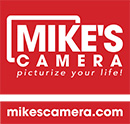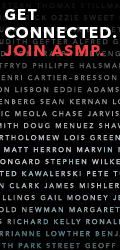You own the rights to your images and, by means of a contract, you license specific rights to the client that wants to use the photographs. The client paying for this license does not have the right to use your images beyond the scope of the agreement.
The Picture Licensing Universal System (PLUS) is a non-profit initiative created to help users and creators clarify and standardize the image licensing process. The first component of the PLUS initiative is a glossary of terms available on-line. The ASMP supports PLUS and encourages photographers to use the PLUS glossary when writing licenses.
PLUS defines licensing as "A legal agreement granting permission to exercise a specified right or rights to a work, often encompassed in an invoice, or the act of granting same."
Ways to Obtain a License to Use Photographs
There are two ways for clients to obtain a license to use images: by commissioning a photographer to fulfill a specific request, commonly called Assignment Photography, or by licensing the use of an existing image, known as Stock Photography. Many photographers license their images in both ways and, much like the three types of uses discussed above, each has distinct business norms of which you need to be aware.
Assignment Photography is a primarily a service business that creates photographs. Assignment Photographers are predominantly independent photographers hired directly by the end user or by a representative of the end user, such as an advertising agency or design firm.
ASMP has one of the oldest and most trusted searchable databases, Find A Photographer, enabling potential clients to find assignment photographers based on specialty and location. Any ASMP General member can have a listing, with portfolio samples, in this database.
Stock Photography is a commodity business, dominated by a handful of large distributors, each selling photographs that already exist. These companies license photographs they own through Work Made for Hire agreements (keeping the entire fee), or license photographs they represent (paying royalties back to the copyright owner).
Independent photographers can also license their images directly to clients — without going through a distribution company — retaining the entire fee. There are increasing numbers of services designed to enable creators to market — and in some cases, price — their own stock images. A number of image portal services offer special pricing to ASMP members; the list changes from time to time, so check the member-benefits page on the ASMP website.
WAYS TO LICENSE PHOTOGRAPHY
| Assignment |
|
Stock |
| A photographer is commissioned to fulfill a specific request. |
|
Licensing the use of an existing image. |
|
| Assignment photographers are predominantly independent photographers hired directly by the end user or by a representative of the end user. |
|
Vehicles to license stock photography:
• distributors
• portals
• independent photographers |
|
|
| Categories of Use Being Licensed |
| Photographs licensed through assignment or stock fall into one of these three categories of use. |
|
|
| Commercial |
|
Editorial |
|
Retail |
| Photography used to sell or otherwise promote a product, service or idea. |
|
Photography used for educational or journalistic purposes. |
|
Photography commissioned or purchased for personal use. |
|
Examples
Paid media advertising
• print advertising
• billboards
• web advertising
Corporate
• public relations
• annual reports
• product packaging
• web sites
• brochures
Business to business
• brochures
• web sites
• product packaging |
|
Examples
Editorial content in
• magazines
• newspapers
• on-line news sources
Textbooks
Encyclopedias |
|
Examples
Weddings
Senior portraits
School portraits
Posters
T-shirts
Greeting cards
Fine-art prints |







